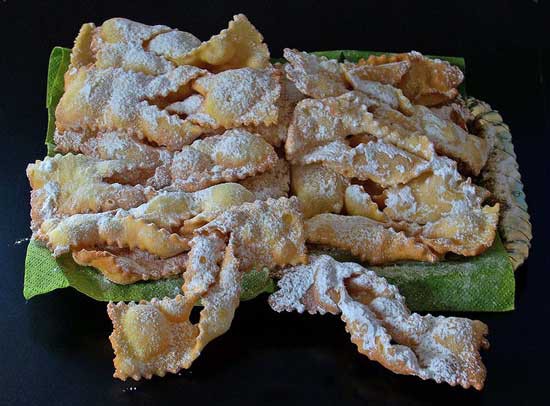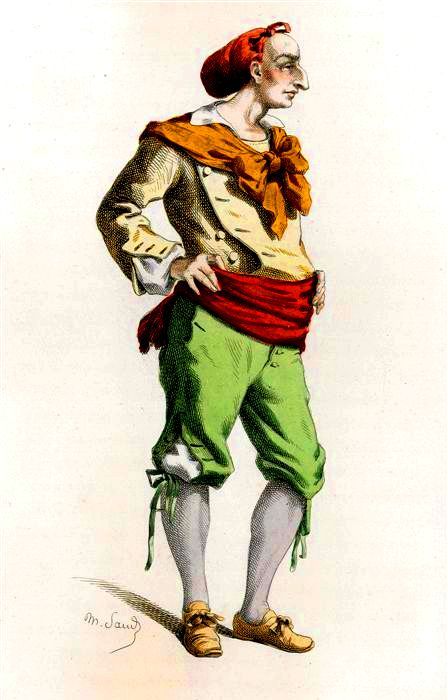And this year too it has arrived. What? Carnival! It is here, all over Italy and in Rome as well ,with its load of confetti, masks, jokes, parades, treats and celebrations. Carnival began on January 17th (the feast of St. Anthony) and will end, as always, on Shrove Tuesday, the day that marks the beginning of the forty days of Lent leading up to Easter. Although lesser than the Carnival of Venice or of that of Viareggio, Rome’s Carnival has its own story to tell and an interesting one too! It derives its origins from the Saturnalia, religious holidays, which in papal Rome were characterized by dances, masks, orgiastic rites, amusements, sacrifices and various types of transgressions.

Never in any epoch has there been a festivity worthy of its name without food, we all agree? What then do you eat in Rome to celebrate Carnival? It is enough to go to a pastry shop or to a well-stocked bar to feast your eyes. You will find the frappe (also called chiacchiere “chitchats”, bugie “lies” or frappole in other regions of Italy): stripe shaped sweets often knotted to form sort of a bow made with a dough of flour, eggs and sugar, which is then fried or baked and finally enriched with a sprinkle of powdered sugar, honey or a splash of liquor.
We also find the castagnole, that send us back to ancient Rome where, during the festivities in honour of the god Bacchus, little fried balls were offered and that have made their way to our days. The castagnole are, in fact, little balls of flour, eggs, sugar and butter, then fried and covered with powdered sugar and cinnamon. Very often they are empty, but they also come in a luscious version filled with ricotta cream, custard, or more rarely with chocolate and limoncello (lemon liqueur). A true delicacy not to be missed during Carnival in Rome and that you will not have trouble finding in town!
How does one dress up for Carnival in Rome? Nowadays the typical masks are just a distant memory and children choose their costume by picking from the trendiest cartoons, but the classic Roman masks keep their charm intact and should be preserved. The masks of Meo Patacca and Rugantino are the typical masks of the Roman popular tradition, now somewhat abandoned.

Meo Patacca
Meo Patacca is a lower class troublemaker and bully, always ready to jump into the melee, according to tradition the typical character from Trastevere: to dress up as Meo Patacca you will need a velvet jacket, knee tight trousers with a colourful scarf worn as a belt and your hair gathered up in a hairnet.
Rugantino is definitely the mask symbol of Rome: a young lower class arrogant and romantic protagonist of one of the most famous love stories of the Roman tradition, also represented in various musicals. How do you mask as Rugantino? Not very differently from Meo Patacca. It is sufficient to wear knee pants, a sash around the waist as a belt, a shirt and a coat with a hanky around your neck. Simple clothes for a perfect representative of a Roman citizen.
Are you ready to celebrate the Carnival in Rome?


